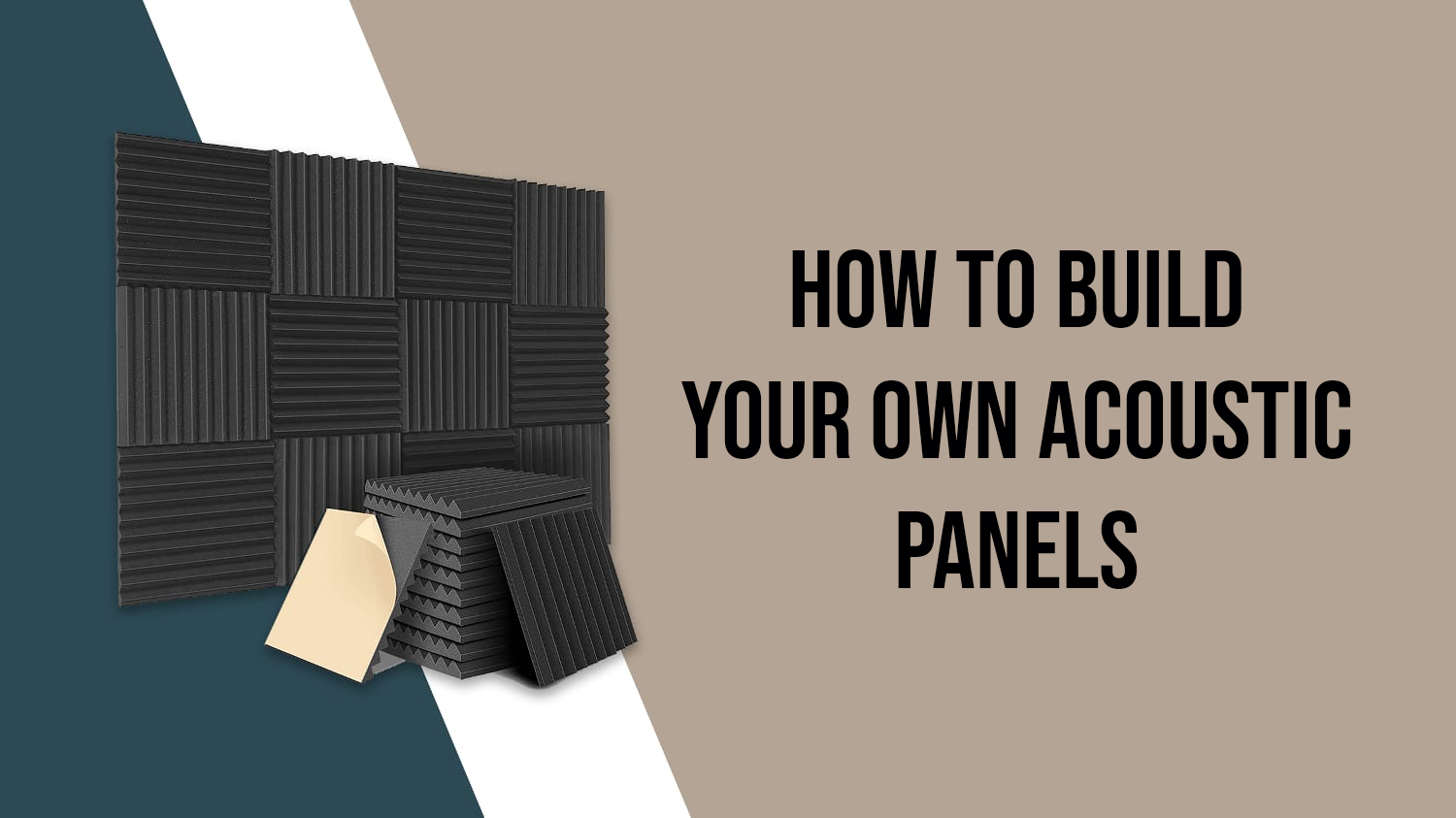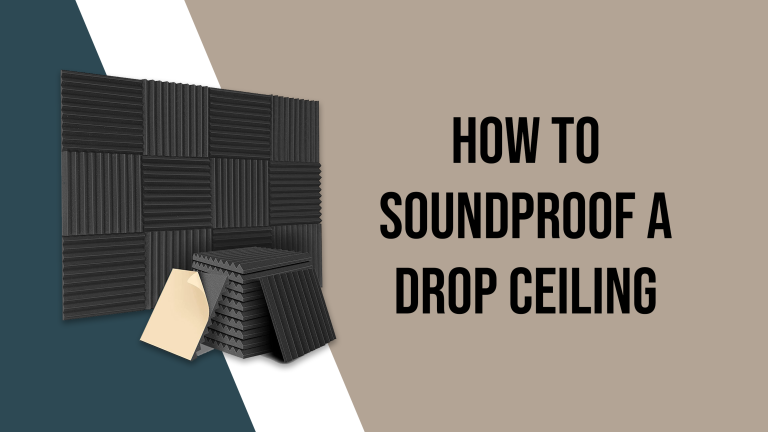How to Build Your Own Acoustic Panels (DIY)
Do you want to improve your room’s acoustics without breaking the bank? In this guide, we’ll show you how to build your own acoustic panels, saving you money compared to store-bought options.
With basic tools and materials, you can create high-quality, custom panels for your home studio, home theater, or any other space that requires sound treatment.
How to Build Your Own Acoustic Panels (DIY)
To get started, gather the necessary tools and materials.
List of Required Tools
- Drill
- Countersink Drill Bit Set
- Circular Saw
- Staple Gun
- Hammer
- Speed Square
- Tape Measure
- Work Gloves
- Dust Masks
- Clamps (Optional)
- Laser Level (Optional)
List of Required Materials
- 23/32 in. x 4 ft. x 8 ft. Plywood Panel
- ROCKWOOL SAFE n SOUND Insulation (23-in W x 47-in L)
- Fiberglass Screen
- Felt Fabric or Guillford of Main Fabric
- Adhesive Spray
- Wood Glue
- Wood Screws
- Nail Gun Staples
- Drywall Anchors (For Mounting)
- Flush-Head Screws (For Mounting)
- Flush Mount Brackets (For Wall-Mounted Option)
- Furniture Bumpers (For Wall-Mounted Option)
- Screw Eye Hooks (For Ceiling-Mounted Option)
- Carabiners (For Ceiling-Mounted Option)
- Extension Chain (For Ceiling-Mounted Option)
Step-by-Step Guide to Building Acoustic Panels
Cutting the Wood
Cut the plywood panel into strips to form the frame of your acoustic panels. You’ll need eighteen 47″ x 3″ strips and eighteen 24-1/2″ x 3″ strips. These will form the sides and tops/bottoms of the frames, respectively.
Assembling the Frames
Assemble the frames using a drill, countersink drill bit set, wood screws, and wood glue. First, create pilot holes in the 24-1/2″ strips and the ends of the 47″ strips. Apply a bead of wood glue to the end of the 47″ strips, then attach them to the 24-1/2″ strips using wood screws. Repeat this process until all your frames are assembled.
Adding Support Strips (Optional)
To provide additional support and stability to the frames, you can add support strips inside the frames. Measure the empty space inside the frames to ensure a snug fit. Cut plywood strips to the measured size and use wood glue and screws to attach them inside the frames.
Installing the Insulation
Place the insulation inside the frame, making sure it fits snugly. To keep the insulation in place, use fiberglass screen. Roll the screen over the back of the panel (the side with the support strips if you’ve added them), staple it into place, and trim any excess material. Pull the screen tight as you staple it to prevent the insulation from sagging later on.
Covering the Panels with Fabric
Choose an acoustic transparent fabric to cover the front of the panels. This allows sound to pass through the fabric and into the insulation. Cut the fabric to size, leaving a few extra inches on each side to wrap around the frame. Use adhesive spray to attach the fabric to the front of the panel and wrap the excess fabric around the frame, securing it with a staple gun.
Mounting the Acoustic Panels
To mount the acoustic panels on the wall, you can use flush mount brackets, French cleats, or other suitable mounting hardware. Attach the hardware to the back of the panel and the wall, then secure the panel in place. If you prefer to hang the panels from the ceiling, use eye hooks, carabiners, and extension chains to suspend the panels at the desired height.
Project Completion Time
Building acoustic panels is a time investment. Depending on your experience and available tools, the project may take a few days. However, the satisfaction and cost savings make it a worthwhile endeavor for many DIY enthusiasts.
Benefits of DIY Acoustic Panels
- Cost-effective: Building your own panels can be significantly cheaper than purchasing pre-made ones.
- Customizable: You can tailor the panels to fit your specific needs and preferences.
- Fun and satisfying: It’s a rewarding project for DIY enthusiasts.
Conclusion
Building your own acoustic panels can be a cost-effective and enjoyable DIY project. With the right tools, materials, and step-by-step guidance, you can create professional-quality panels to improve the acoustics in your home studio or any other space. Just make sure to choose the right materials, follow safety precautions, and mount the panels securely for optimal performance.
FAQs
Can I use other insulation materials besides ROCKWOOL SAFE n SOUND?
Yes, you can use other types of insulation, such as fiberglass or mineral wool. However, make sure the chosen material has good sound absorption properties and is safe to work with.
Can I use a different fabric for the panel covering?
Yes, you can use any fabric that is acoustically transparent, meaning it allows sound to pass through it without reflecting or distorting the sound waves. Some popular options include speaker grille cloth, muslin, and burlap. Make sure the fabric you choose is breathable, lightweight, and easy to work with.
How many acoustic panels do I need for my room?
The number of acoustic panels you need depends on the size of your room, the materials used in its construction, and your desired level of sound absorption. As a starting point, consider placing panels at the first reflection points on the side walls, behind the listening position, and on the ceiling. Additionally, you may want to add bass traps in the room corners to help control low-frequency sound. Start with a few panels, then adjust based on your room’s specific needs and acoustic characteristics.
Can I paint or decorate the acoustic panels?
Yes, you can personalize your acoustic panels by painting or decorating them. However, make sure the paint or decoration doesn’t compromise the acoustic properties of the panels. For example, avoid using thick or heavy paint that might obstruct the fabric’s acoustic transparency. Instead, opt for fabric-safe paints, fabric dyes, or lightweight decorations that won’t affect sound absorption.
How do I maintain my acoustic panels?
Maintaining your acoustic panels is relatively simple. Regularly dust the fabric surface to keep it clean and free from debris that might affect sound absorption. If the fabric becomes stained or dirty, consult the manufacturer’s cleaning instructions or spot-clean the affected area with a mild, fabric-safe cleaning solution. Avoid using harsh chemicals or soaking the panels, as this could damage the insulation and compromise the panel’s effectiveness.








